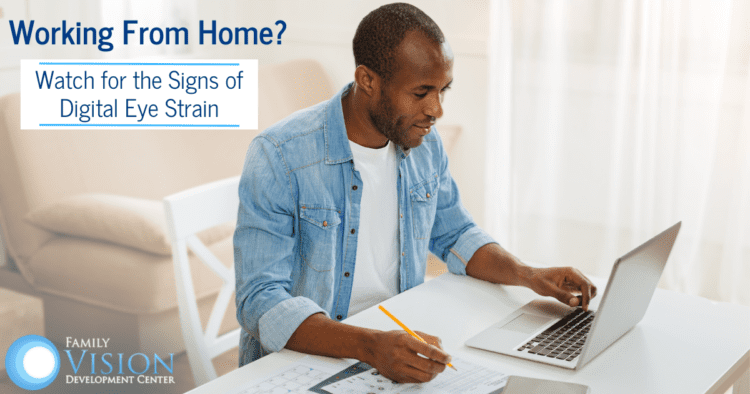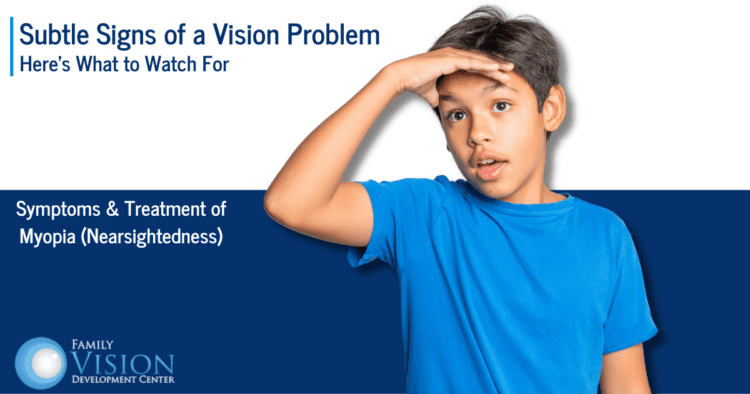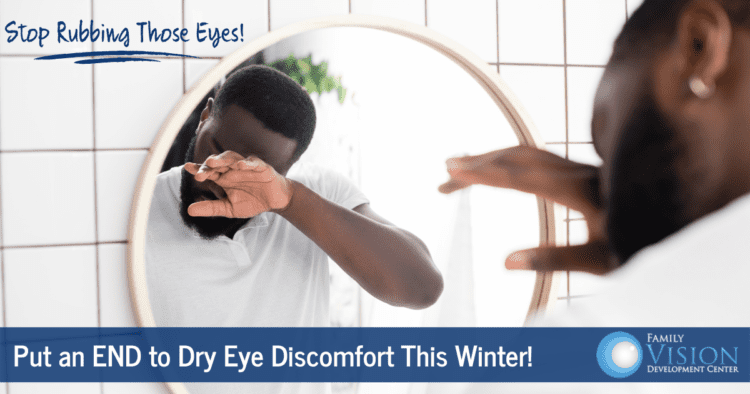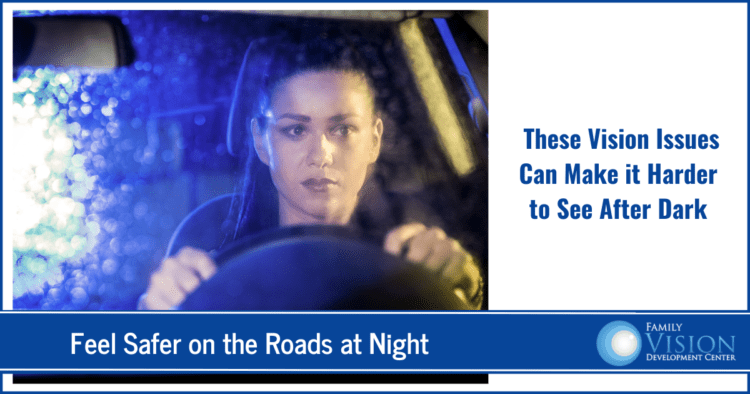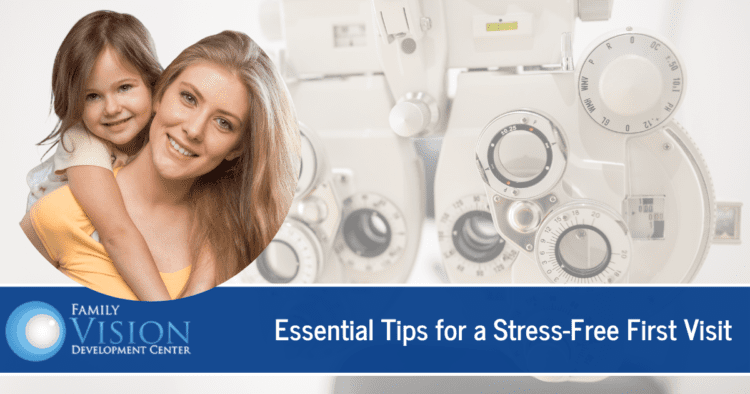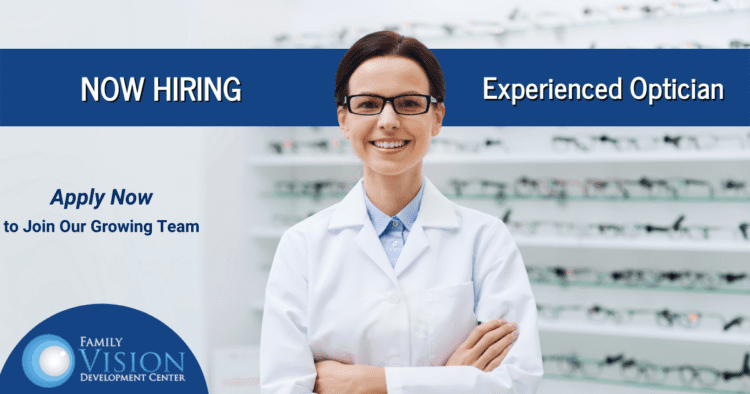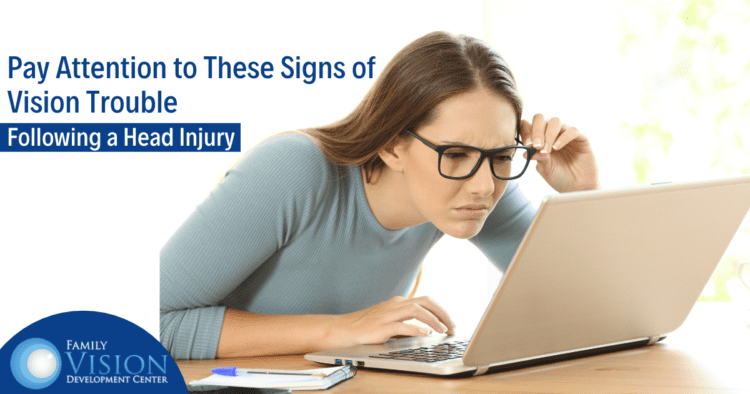The COVID-19 pandemic caused people to go remote in record numbers. Remote learning in schools and working from home, communicating through the use of digital screens, became the standard way to operate. While things have slowly started to return to in-person, many people still increasingly rely on their digital devices on a daily basis. This, unfortunately, has led to more people experiencing the effects of digital eye strain.
Why Digital Eye Strain Occurs
Digital eye strain, also known as Computer Vision Syndrome (CVS), is a group of vision-related problems that are caused by prolonged use of electronics such as computers, tablets, e-readers or smartphones. Eye discomfort and vision problems seem to increase the longer a person views these screens. The severity of the vision problems can vary from person to person, and can depend on the specific conditions that are present. For example, factors such as lighting, distance from the screen, length of time in front of the screen, the amount of glare on the screen, poor posture and underlying vision problems can all affect a person’s overall symptoms.
Symptoms
Digital eye strain can result in any of the following:
- Headaches
- Blurred or double vision
- Dry eyes or watery eyes
- Neck and shoulder pain
- Sore or tired eyes
- Light sensitivity
Prevention and Treatment
Luckily, digital eye strain is not a permanent condition. In fact, there are a number of ways to lessen the effects, eliminate the symptoms or even avoid it altogether.
- Take frequent breaks when working on or looking at digital screens. It is good practice to follow the 20-20-20 rule – after 20 minutes on a digital device, look 20 feet into the distance for at least 20 seconds. You should also give your eyes a full 15-minute rest after each 2-hour period of digital screen use.
- Adjust seat and screen positions appropriately. The center of the screen should be 4-5 inches (15-20 degrees) below eye level, and 20-28 inches away from your eyes. Your seat should be positioned so you can sit comfortably with your back straight and your feet resting flat on the floor.
- Reduce glare on the screen. Adjust the lighting in the room from overhead lights or windows to eliminate as much glare as possible from the screen. If that is not possible, try using a screen glare filter to reduce the amount of light being reflected from the screen.
- Get underlying vision conditions diagnosed and treated. Prior vision conditions are a main cause of more severe cases of digital eye strain. Therefore, treating these conditions can help to relieve serious symptoms. You should also make sure your glasses or contacts are always fitted with current, appropriate prescription lenses.
- Vision therapy treatment. If symptoms of digital eye strain persist or do not subside with preventative measures, vision therapy can be an effective treatment option. This type of therapy consists of a series of eye exercises that retrain the eyes and brain to work together more effectively. Each program is customized to correct the specific visual deficiencies for each patient.
Get Regular Vision Exams
Symptoms of digital eye strain can get worse if not treated in a timely manner. And while you might not be able to avoid working in a remote environment, you can take the appropriate actions to reduce or avoid the symptoms of digital eye strain. An important step is to get regular vision exams in order to make sure current prescription lenses are up-to-date, as well as ensure early diagnosis of any new vision issues. At Family Vision Development Center, we work with patients of all ages to help reduce the effects of digital eye strain and maintain good overall eye health. Contact our office at 630-862-2020 to schedule an appointment or to learn more.
When an object in the distance appears blurry or out of focus, yet close objects remain in focus, that is a vision disorder called myopia, which is also known as nearsightedness. It is a very common vision condition in kids, often appearing between the ages of 6-14. Although myopia affects almost one-third of all adolescents in the U.S., it does not always get diagnosed as early as it should. Here is some important information parents need to know regarding what to watch for, as well as how to treat it.
Signs of myopia
Kids with myopia can often perform close-up tasks like reading and writing without a problem. So sometimes a parent might not realize that their child is having trouble focusing on objects in the distance. Any of the following symptoms can indicate that myopia might be present:
- Holding books or other reading materials close to their face when reading
- Squinting when watching TV or looking at the chalkboard / whiteboard in school
- Sitting very close to the TV when watching
- Always requesting a seat in the front of the classroom
- Losing interest in playing sports that require good distance vision
- Frequent headaches
- Excessive blinking
- Frequent rubbing of the eyes
Tips to reduce effects
While there is no total cure for myopia, there are several proactive actions you can take that can help to slow the progression of myopia, including:
- Get outdoors more often, as increased exposure to daylight has been associated with slowing its progression
- Limit time spent in front of digital screens
- Take frequent breaks when working at a computer or doing other close-up work
- Eat healthy foods like fruits and green leafy vegetable that contain vitamins and nutrients that promote eye health
- Get regular vision exams
Treatments for myopia
There are several options available to help kids regain or improve distance vision, including:
- Compensatory lenses – this is a very common form of treatment and is what is thought of when people think of eyeglasses for clarity, and can be used for kids of all ages. This treatment can be in the form of prescription eyeglasses or contact lenses. We can discuss which is the most appropriate choice, based on your child’s age, lifestyle, activity level, etc.
- Therapeutic lenses – these special lenses are designed to help either reduce the total amount of myopia or help keep the myopia from increasing in severity. These therapeutic lenses can be successful alone but sometimes are used in addition to vision therapy procedures. They can be single vision lenses, bifocals or no-line bifocals, they may also include small amounts of prism and can also be contact lenses or any combination of the above.
- Vision Therapy – vision therapy is a kind of physical therapy for the visual system, and is a very effective treatment option for kids whose myopia results from reduced eye focusing skills. A customized vision therapy program uses a series of therapeutic eye exercises to strengthen eye muscles and help patients recover normal visual function. It can be used as an individual treatment, or in combination with glasses or contacts, to improve myopia in children.
Visit Family Vision Development Center for a Complete Evaluation
The earlier myopia is detected in children, the sooner treatment can begin, which can help reduce the overall progression of the disease. The most effective way to diagnose a vision issue like myopia is through a comprehensive vision exam. So if you suspect that your child is struggling with distance vision, have them evaluated as early as possible. The compassionate staff at Family Vision Development Center is experienced working with patients of all ages and we are dedicated to improving the eye health of kids and adults alike. Contact us at 630-962-2020 to schedule an appointment for your child’s vision exam or learn more about our practice here https://www.fvdcpc.com/about/.
Teachers spend so much time interacting with their students on a daily basis, which gives them a great opportunity to notice a student’s possible vision problems. Classroom activities can reveal that a child is struggling to keep up. And in many cases, those learning difficulties could be due to an undiagnosed vision issue. Detecting problems early on can allow for quicker, more efficient treatment. Therefore, teachers that notice any of the following symptoms in their students should notify a parent or guardian right away.
Amblyopia
Amblyopia, also called “lazy eye”, is a common vision condition in children. This disorder occurs when the eyes and brain do not work together properly. As a result, the brain will choose to use only one eye as its primary source of visual information. The other eye will “shut off” and will not be used very often, or at all. Usually this results in one eye not being able to see 20/20. Sometimes this will cause the eye to drift in or out, but many times it remains perfectly straight. Other than physical appearance, teachers can also look for signs of amblyopia which could include messy handwriting, poor eye-hand coordination, poor depth perception such as excessive tripping or running into doors and difficulty reading.
Strabismus
This is another type of common vision disorder that results from the brain having difficulty using both eyes at the same time. If the stress of using both eyes together becomes too challenging, the brain will often allow one of the eyes to turn out or turn in to remove the problem, since using one is less confusing. This differs from Amblyopia in that both eyes have the ability to see 20/20 but not at the same time. Symptoms for strabismus can also include double vision, headaches, eye strain, eye fatigue, squinting, closing or covering one eye to look at objects, poor depth perception, balance and coordination issues, poor sports performance or difficulty reading or concentrating. As you can see, there is a lot of overlap of symptoms with these types of vision issues. Only a proper binocular vision evaluation can delineate the difference.
Accommodative Disorder
This type of disorder affects a child’s ability to focus their eyes properly. This happens particularly at near distances or when switching focus from near to far away. When this vision disorder is present, a child may struggle with blurred vision, eye strain and fatigue, eye discomfort or headaches. Teachers might notice a child having difficulty with reading, writing or computer work, or focusing on the front of the classroom after working at their desk. Additionally, they could notice a student rubbing their eyes a lot or excessively blinking their eyes. Any of these symptoms can indicate an accommodative disorder.
Convergence Insufficiency
This condition is characterized by the inability to move and focus both eyes inward on near objects comfortably. A child would often notice the symptoms when reading or doing other close work, but sometimes children are unaware that there is an issue. These symptoms can include double vision, headaches, eye strain, squinting, closing or covering one eye to look up close or difficulty reading or concentrating, homework taking too long, skipping lines or words when reading, losing their place when reading and not performing up to their potential in school. Since most younger children are unaware that these symptoms are not normal, they will not report any difficulties to their parents or teachers. Teachers that recognize these symptoms in a student should be aware that convergence insufficiency could be the cause.
Vision Therapy for Treatment
Teachers that suspect a vision problem with a student should know that there is a highly effective form of treatment available known as vision therapy. These customized programs are like physical therapy training sessions for the visual system, including the eyes and brain. When started at an early age, vision therapy can be incredibly successful in rehabilitating all types of binocular vision impairments.
At Family Vision Development Center, our doctors have advanced training in many different types of vision therapy techniques, in order to meet the needs of our younger patients and the vision challenges they often face. We understand that vision disorders can make school especially difficult and we often receive recommendations from teachers who want to see a solution for their struggling students. Contact us at 630-862-2020 to learn more about common vision problems in school-aged kids, as well as the best treatment options available.
Additional information can be referenced here
Cold weather can have a drying effect on our bodies. When the temperature drops, our hair can feel dryer, our skin can get flaky and our eyes can get extra irritated. Dry eyes can cause you to experience redness, itchiness, grittiness, blurred vision or a feeling that there is something in your eye. Or conversely, it may also lead to episodes of excess tearing that follow periods of dryness, discharge or pain in the eye. There are a number of reasons that you might be experiencing dry eyes, and luckily there are also ways to treat them.
What Is the Condition Known as Dry Eye
Healthy eyes typically produce tears on a continual basis. These tears are made up of a mixture of water, oils, mucus and a large number of proteins. Tears are necessary to provide moisture and lubrication, protect against infection and keep the eyes comfortable. Dry eye occurs when the quantity or quality of tears fails to provide enough lubrication to the surface of the eye.
What Causes Dry Eyes
One common cause for dry eyes in winter is the amount of humidity in the air. In the colder months, the humidity drops outside. Additionally, turning on the heat at home evaporates the humidity inside. This leads to extra dry conditions which can have an effect on the eyes. It should be noted, however, that dry eyes don’t just happen in the winter months. There are other factors which can also contribute, including the following:
- Some medications have been known to cause dry eyes including antihistamines, decongestants, antidepressants and high blood pressure medications
- The natural aging process can cause declines in tear production, especially in people over 50
- Certain diseases such as lupus, rheumatoid arthritis, diabetes, thyroid disorders or Vitamin A deficiencies are associated with dry eyes
- Women are at a higher risk of developing dry eyes due to hormonal changes during pregnancy or menopause
- Environmental factors such as wind, smoke, dryness, or seasonal allergies can lead to dry eye
How to Find Relief for Dry Eyes
Now that you understand what causes dry eyes, it’s important to know what to do to find relief. Try these helpful solutions this winter to ease discomfort or prevent symptoms from worsening:
- Use a humidifier at home to increase humidity levels
- Drink a lot of fluids to keep your body (and eyes) hydrated
- Avoid blowing heat vents directly at your face
- Wear protective sunglasses to block blowing wind or dry air
- Use over-the-counter medications such as artificial tears to relieve mild symptoms
- Use prescription dry eye medications
- Use of certain products and procedures that can stimulate tear production
- Surgical options that partially or completely plug the tear ducts to slow the drainage of tears once they collect on the surface of the eye
Treat Your Dry Eyes Before it Gets Worse
At Family Vision Development Center, we understand that dry eyes are very uncomfortable and often painful. But more than that, we also want you to know that untreated dry eyes can progress to more serious conditions, such as eye infections, inflammation, abrasions, corneal ulcers or vision loss. Therefore, it is important to get diagnosed as early as possible. Through a comprehensive vision exam, we can determine the severity of your symptoms, as well as determine the most effective treatments so you don’t have to suffer through it any longer! Contact us at 630-862-2020 to learn more and to schedule an appointment.
A new year quite often brings about new hopes for ourselves. People make resolutions at the start of a new year to signify changes they want to make in their lives. Most resolutions have obvious benefits. However, some have the hidden benefit of protecting your vision as well. Healthy vision is important in all areas of life, so if you plan on making a change in 2022, why not try one of these resolutions with double the perks!
Resolutions that Protect your Vision
While there are endless possibilities for new years’ resolutions, the following can also contribute to overall healthier vision.
- Quit Smoking – Of all the new year’s resolutions, this is one of the most common by far. There are so many health benefits to giving up cigarettes. But people often do not realize how smoking can affect your vision. People who smoke have an increased risk of developing age-related macular degeneration, cataracts, glaucoma, diabetic retinopathy and dry eye syndrome. Quitting is definitely not easy, but it can vastly improve your eye health.
- Eat healthier – Eating healthy usually means cutting back on the junk food and adding more fruits and vegetables into your diet. As it happens, fruits and vegetables contain a number of vitamins and minerals that are known to be beneficial to your vision. Omega-3 fatty acids, vitamin E, vitamin C and beta carotene can be found in fish, nuts, citrus fruits, leafy green vegetables, carrots and potatoes. These important nutrients can reduce the risk of eye problems like dry eye, macular degeneration and cataracts.
- Exercise more – Getting more exercise can certainly help you get back into those favorite pants. But research has shown that regular exercise can also promote healthy vision and protect against eye damage. There is a strong correlation between obesity and major eye diseases like glaucoma, macular degeneration, cataracts and diabetic retinopathy. Therefore, losing extra weight can help to decrease the risk of developing one of these dangerous issues. Additionally, cardio exercise increases the flow of blood to the optic nerve and retina, which can help sustain healthy vision.
- Get outside more often – Getting out in the fresh air can lift your spirits, reduce stress and even make you more focused. And on top of those great benefits, getting outside can help improve your vision! Indoor lighting can cause increased strain on your eyes, which can cause lasting damage over time. Additionally, being outside means less time in front of a digital screen, which can lower the risk of computer vision syndrome (also known as digital eye strain).
One Bonus Resolution
The above resolutions are all great choices to live a better, healthier lifestyle, and take care of your vision at the same time. But one additional promise you should make to yourself in this new year, and each year after that, is to get regular eye exams. Many eye diseases are manageable and even completely treatable if detected early enough. Your vision is so important to your overall quality of life, so you should do everything you can to protect it. Don’t wait – give us a call at 630-862-2020 to schedule your vision exam and get started on a very happy new year!
For many people, driving at night is no more difficult than driving during the day. But for others, nighttime driving presents additional challenges that they don’t experience when the sun is out. For example, certain vision issues can cause people to see halos around lights or increased glare on the roads. Additionally, they might experience blurred or clouded vision or eye fatigue when driving after dark.
If you experience difficulty driving at night, it may be due to one of the following reasons.
Nearsightedness
The answer to your vision problems at night may be as simple as nearsightedness, or myopia, which causes objects in the distance to be blurred. People with myopia often have difficulty driving at night. If this is the case, prescription eyeglasses or contact lenses could be the solution you need to restore your nighttime vision.
Cataracts
Cataracts occur when the eye’s lens becomes cloudy. This cloudiness causes things to become blurry, hazy or less colorful. Driving at night with cataracts is especially difficult, as they can cause light sensitivity, especially with oncoming headlights, as well as overall problems seeing in dark conditions. Glasses or contact lenses can help improve the symptoms of cataracts. However, if symptoms progress, surgery to remove them is also an option.
Vitamin or Nutrient Deficiency
Perhaps surprisingly, a lack of certain vitamins or minerals can have an effect on the ability to see clearly while driving at night. Vitamin A helps keep the retina healthy, and can be found in carrots and green leafy vegetables. People with low levels of Vitamin A, as is often the case for those with Crohn’s disease or celiac disease, often experience night vision issues. Additionally, a zinc deficiency reduces the positive effects of Vitamin A in the eye, which can contribute to poor night vision. Increasing these important nutrients might help to alleviate some difficulty while driving at night.
Retinal Diseases
Retinitis pigmentosa is a genetic disorder that affects the retina and how it responds to light. Although rare, a main side effect of this disorder is loss of night vision. While your vision may be normal during the day, it may take longer to adjust to the dark, thereby making driving at night much more difficult. A more common retinal disease that can affect night vision is age-related macular degeneration (AMD). One of the first signs of AMD is difficulty seeing at night, which happens during the early stages of this disease. It is important to visit your eye doctor as the first sign of night vision problems, so eye diseases can be detected and treated as early as possible.
Driving at night without proper visual skills can be an obvious safety hazard. If you feel like it is becoming more difficult to see clearly on the road when the sun goes down, please come see us for a vision evaluation. We have the appropriate tests to determine the cause of your nighttime vision problems, as well as effective treatment options to help improve your symptoms. Family Vision Development Center provides a wide range of eye care services for the whole family in a safe, comfortable environment. Give us a call at 630-862-2020 to schedule your appointment today.
If you’ve been dreading your child’s first eye exam because you think they will be scared or they won’t cooperate with the doctor, stop worrying! And more importantly, don’t let that discourage you from bringing them in. Regular eye exams starting at a very young age are so important for healthy vision. And there are many things you can do to prepare your child before your visit. Just remember, taking your child for their first eye exam does not have to be a stressful event. Just follow these proven tips and you’re sure to have a productive appointment.
Select an Appointment Time That Works With Your Child’s Schedule
Kids, like all of us, tend to feel a little more energetic at certain times of the day. So, if you want to make the optometrist visit as pleasant as possible, choose a time when your son or daughter is usually happy and well-rested. Scheduling their first eye exam during your child’s usual meal or nap time, immediately after a nap, or at the end of a long day can result in a cranky child who is reluctant to participate in the vision assessment. Don’t forget to allow additional time if your child’s eyes will be dilated or to select frames if needed.
Let Your Child Know What to Expect at Their First Eye Exam
Trying anything new can be scary, especially if it involves meeting a new eye doctor! If your child knows what to expect, they will understand that there’s nothing to be afraid of. Before your visit, explain that the doctor will examine their eyes in order to check their vision. This will probably involve putting some drops in their eyes as well as using a light to look into their eyes. It might make their vision a little blurry for a minute, but the drops are not painful.
Additionally, let your child know that they will be asked to identify different letters or pictures, both close up and far away. The doctor will give them easy instructions to follow during their exam and they need to try their best so the doctor can correctly diagnose any vision problems and offer a treatment as soon as possible.
Prepare for Possible Delays
The eye doctor will make every effort to see your child at the appointed time, but that doesn’t mean you won’t spend a little time in the waiting room completing paperwork. And of course, as with any medical office, there is always the possibility of an emergency causing unexpected delays. Prepare for any possible waiting time by bringing a few toys or books from home to keep your little ones occupied.
Make Sure Your Child is Comfortable
You know your child best and you know what their needs are when trying new things. When it comes to a first eye exam, some kids hop on the exam chair without prompting, while others aren’t quite as brave. If your young child is nervous or anxious, feel free to hold him or her in your lap during the assessment and examination. Older children may feel more confident if you stay by their sides or sit in a nearby chair during the visit with the optometrist.
At Family Vision Development Center, we encourage healthy vision habits for all members of the family, starting as early as 6 months old! Our skilled optometrists are not only trained in advanced vision therapy techniques, but they also make even our youngest patients feel comfortable and at ease during their visits. Don’t wait any longer! Call us at 630-862-2020 to schedule your appointment for that important first eye exam.
Additional information can be referenced here
The Family Vision Development Center is expanding, and we are seeking an experienced Optician to join our growing private Optometry/Vision Therapy office located in Aurora. We have a dynamic and energetic office with two Optometrists on staff. The successful Optician candidate should be prepared to work from 25 to 40 hours, which include morning and early evening hours with rotating Saturdays.
The candidate should be familiar with sales of glasses, contact lenses, contact lens training as well as a knowledge of pre-testing and pre-testing equipment. Additionally, experience with optical and medical billing is preferred but training will be provided. If you enjoy serving patients of all ages and have a strong work ethic and a desire to work in an optometric office with a unique perspective, we would like to talk with you!
Optician Job Responsibilities
- Review Optometrist’s prescriptions and orders based on medical charts.
- Operate pre-testing equipment or provide technician services as needed. Training will be provided.
- Educate patients on their lens options and help them make educated choices about what is appropriate for their medical needs and lifestyle preferences.
- Provide honest but compassionate feedback about eyewear choices.
- Achieve and maintain the high office standards while attending to the patients’ needs.
- Manage inventory of frames and contacts to ensure optimum customer satisfaction and product variety.
- Communicate with the Optometrists with questions or concerns about prescriptions and any other eye-related issues.
Optician Qualifications and Skills
- College degree preferred but high school or equivalent will be considered.
- 2+ years experience in the optical field required, specifically with dispensing glasses and contact lenses.
- Experience with all aspects of an optometric office including glasses and contact lenses.
- Ability to operate optical equipment.
- Excellent customer service, sales skills and attention to detail a must.
Pay: $15.00 – $20.00
About Family Vision Development Center
We are a full-service vision center offering comprehensive vision exams for eyeglasses, contact lenses and management of ocular disease including glaucoma, diabetes, macular degeneration and cataracts.
Our specialty is neuro-optometric rehabilitation and vision therapy services. What we do at The Family Vision Development Center is outside the scope of most optometric offices. We are a unique facility whose specialty is the diagnosis and treatment of binocular (two-eyed) vision dysfunctions, learning-related vision issues and vision therapy.
Our patients trust us with their vision, and we do not take that responsibility lightly. In that respect, we continually strive to provide our patients with the most comprehensive neuro-optometric vision evaluations along with individualized treatment programs using the most current and effective equipment and methods. Additionally, our philosophy of whole body wellness extends beyond the eyes. This refreshing view of vision care allows us to ‘see’ the whole person and make recommendations that extend beyond just clear vision and healthy eyes.
If you are interested in joining our team, see below to submit your resume.
Submit Resume
Qualified Optician candidates should submit a resume to: dr.martin@fvdcpc.com
A blow or jolt to the head is a serious thing and should never be taken lightly, as it can result in a traumatic brain injury (TBI). Whether it is mild (often referred to as a concussion) or severe, a TBI can have lasting effects, especially when it comes to your vision. There are many events or circumstances that can cause a concussion or traumatic brain injury, such as:
- Falling
- Stroke
- Blunt force trauma
- Car accident
- Physical assault
- Sports activity collision
If you have experienced any of these, you should be on the lookout for some common visual symptoms that often follow a concussion or TBI.
Vision Issues Often Associated with a Brain Injury
A majority of people who experience a TBI or concussion-related injury will suffer from one or more of the following visual impairments:
- Blurry vision
- Double vision
- Problems with eye movements or tracking
- Depth perception issues
- Peripheral vision loss
- Light sensitivity
- Reading difficulties
- Aching eyes
- Eye teaming issues
- Improper eye alignment/eye turn
Unfortunately, many instances of injury-related vision problems go undiagnosed in the beginning. The symptoms may seem mild or insignificant at first, and therefore medical treatment is not deemed necessary. However, if left untreated, these issues can become much more serious.
Vision Therapy Following a Brain Injury
If you experience any kind of injury to the head, it is important to see both your medical doctor and an eye doctor who has specific training in TBI and concussion-related vision problems. At Family Vision Development Center, our professional team has advanced training in neuro-optometric vision rehabilitation, which means we understand these types of injuries as well as the treatment needed to restore proper vision. Using customized, therapeutic eye exercises, our specialized vision therapy programs are an extremely effective way to retrain the eyes and brain in order to recover normal visual skills.
We understand that each patient is unique and each vision therapy treatment plan should fit their specific needs. As such, we provide each of our patients with a comprehensive neuro-optometric vision evaluation in order to create an individualized treatment program using the most current and effective vision therapy methods available. We look forward to getting your vision back to normal so you can get back to enjoying life! Give us a call at 630-862-2020 to schedule your appointment.
Do you ever go outside on a sunny day and the bright light actually causes pain in your eyes? Or maybe you walk into a brightly-lit room and immediately feel the need to squint? This negative reaction to light is known as photophobia, or light sensitivity. Photophobia is not an eye disease, but rather a symptom of a number of possible conditions.
Possible Reasons for Light Sensitivity
There are a number of possibilities when it comes to determining why your eyes are sensitive to light. Some proven causes include:
Migraine headaches
Migraines are severe headaches that can be triggered by a number of factors, such as hormonal changes, stress or the environment. Light sensitivity is a very common symptom of migraines and many people feel the need to dim the lights during a migraine attack in order to help ease the pain.
Conditions That Affect the Brain
Photophobia can be associated with certain serious brain conditions. Symptoms of these conditions can include inflammation in or surrounding the brain, or bleeding near the brain. These conditions can be life-threatening and immediate care should be sought if they are suspected.
- Encephalitis
- Meningitis
- Subarachnoid hemmorrhage
- Mild traumatic brain injuries (mTBI) or concussions
Conditions That Affect the Eyes
Light sensitivity can also be caused by a number of eye conditions including:
- Dry eye syndrome – tears do not provide adequate moisture
- Conjunctivitis – also known as “pink eye”
- Cataracts – cloudy coverings over the lenses of the eyes
- Corneal abrasion – a scratch or injury to the cornea
- Scleritis – inflammation of the white part of the eye
Medications
Certain medications have been known to cause excess light sensitivity for some people, including:
- Some antibiotics
- Tricyclic antidepressants
- Certain acne medications
- Medications used to treat malaria
- Some heart medications
- Certain diabetes drugs
What to Do for Photophobia
As previously stated, light sensitivity is a result of an underlying condition. Therefore, treatment is most often accomplished by addressing that specific condition. Once the underlying condition is treated, the light sensitivity should resolve on its own. Additionally, you can try the following suggestions:
- Wear quality sunglasses with polarized lenses when outdoors
- Ask your doctor if light sensitivity is a side effect of any medications you are currently taking
- Try to increase natural lighting at the office by turning off the fluorescent bulbs and opening window blinds
- Get regular vision and medical exams to detect any abnormalities as early as possible
At Family Vision Development Center, we can help determine the underlying cause of your photophobia and work with you to discover the best treatment options. Regular comprehensive vision exams are the best way to monitor your eye health, as we can quickly notice any changes in vision and start treatments as early as possible. Contact our Aurora office at 630-862-2020 to learn more or to schedule an appointment.
